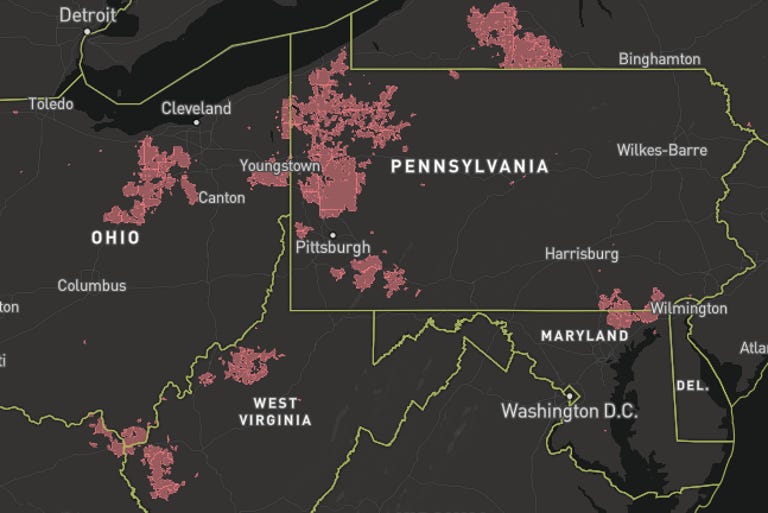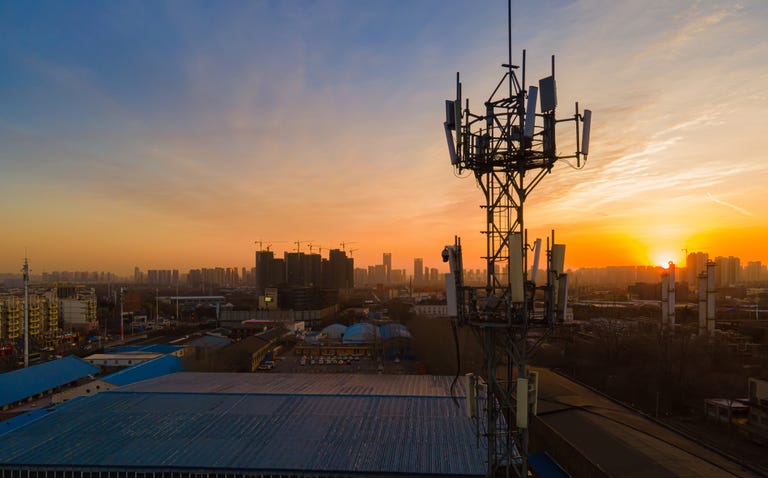Unavailable in Provider unavailable in 90001
Armstrong home internet review rating
Pros
- Serviceable speeds
- No contracts
- Equipment included with most plans
- Local service and support
Cons
- High cost per Mbps
- Slower upload speeds
- Data cap with select plans
Cable internet is primarily dominated by big providers like Spectrum, Xfinity and Cox, but these providers don’t always serve rural regions. Armstrong, a family-owned and locally operated internet service provider based out of Butler, Pennsylvania since 1943, is a regional and rural provider that focuses on bridging the gaps left by bigger cable internet providers.
For the most part, regional providers are priced a bit higher and have fewer options or special offers (think of what you get at a mom-and-pop shop versus a big box store) and that’s largely the case with Armstrong and its Zoom internet brand. Prices tend to be a little higher and speed tiers are somewhat slower than comparable cable internet plans, even more so compared to fiber internet, but Armstrong will probably still be your best bet if DSL or satellite are the only other internet options in your area.
It’s a common belief that high pricing among internet service providers, particularly cable ISPs, is the result of monopolizing a service area and then jacking the prices up simply because they can. While that may be the case for some, I don’t get that impression with Armstrong. Furthermore, Armstrong doesn’t exploit the common ways to get more money from customers, like trap pricing and high equipment or installation fees.
In short, don’t let the sticker price immediately turn you away from Armstrong, because there’s a lot to like about the service. There are also a few things you’ll want to be aware of before signing up. I’ve broken down everything you need to know below, including service areas, plan details and how the provider compares to other possible internet options near you.
Armstrong internet availability and technology

Armstrong has the greatest availability in western Pennsylvania, particularly in and around its home city of Butler, but service also reaches select areas around Pittsburgh and surrounding suburbs, including Mount Pleasant, Stockdale and Cranberry Township. Coverage extends across the Ohio border, and those south of Cleveland, such as Medina and Ashland, are likely to be served by Armstrong as well.
Other Armstrong service areas include parts of West Virginia like Harrisville and southern New York throughout much of Allegany and Steuben counties. You may also find Armstrong internet in a small pocket along the Maryland-Pennsylvania border northeast of Baltimore or within a tiny sliver in Kentucky where the commonwealth meets West Virginia and Ohio.
In nearly all service areas, Armstrong uses a cable internet network, that is, one that sends internet service via coaxial cables. There are some advantages to cable internet, such as widespread availability and fast download speeds. Common drawbacks to cable include slow upload speeds and network congestion, which can lead to slower download speeds during peak usage times.
Fiber internet overcomes many of cable’s shortcomings, and Armstrong does have a small but growing fiber network. Those in Medina, Ohio and Butler, Pennsylvania will have the best chance at fiber service but, again, most households within Armstrong service areas will have a cable internet connection.
Armstrong internet plans
If Armstrong is available in your area, you’ll have a few Zoom internet options. I’ve listed the most common plans and speeds below, but you may find the speeds and pricing to vary slightly depending on your location.
Zoom internet plans
| Plan | Monthly price | Max speeds | Fees and service details |
|---|---|---|---|
| Zoom Express | $35 | 25Mbps down, 4Mbps up | No data caps; optional $11 monthly equipment fee |
| Zoom | $50 ($77 after 12 months) | 300Mbps down, 300Mbps up | No data caps; equipment fee included in monthly price |
| Zoom Extreme | $75 ($110 (after 12 months) | 1,000Mbps down, 1,000Mbps up | No data caps; equipment fee included in monthly price |
So, about that pricing. To be fair, it’s not drastically higher than competing cable providers, but it is higher than most, especially when you consider cost per Mbps.
Cost per Mbps is a good measure of a plan’s value because it gives you an idea of how much speed you’re getting for the money. Zoom Express has a cost per Mbps of over a dollar, which isn’t uncommon for a low-speed, cheap internet plan, but you’ll get more value from higher-tiered plans.
Still a better value than DSL or satellite
Armstrong largely operates in areas that could be considered suburban or even rural, where high-speed connections may not be the most accessible. In such areas, DSL and satellite are often the only other options, and I’d say cable internet, including that from Armstrong, will be the better choice 99% of the time.
You’re likely to get more speed and value with Armstrong, not to mention a more reliable connection. Satellite internet plans from Hughesnet and Viasat all come with a cost per Mbps of over a dollar, and you’d be hard-pressed to find a DSL plan with a cost per Mbps lower than 50 cents from any provider. Armstrong may have higher pricing than select providers around the US, but it very well may offer the best value compared to what’s actually available in your area.
Armstrong Zoom service details
The good news about Zoom plans and pricing is that there isn’t much else inflating the overall cost. Equipment rental and unlimited data are included in the price.

Wi-Fi equipment is included at no extra cost with Zoom and Zoom Extreme, and all plans feature whole-home coverage with simple monitoring and control using the Plume HomePass app. Plume Wi-Fi isn’t the most advanced mesh Wi-Fi system, but it’ll get the job done, especially considering that it’s free.
How does Armstrong’s Zoom internet compare?
As mentioned above, Armstrong isn’t the cheapest cable internet provider, but it’s not priced drastically higher than other cable ISPs, and may even be cheaper than some leading providers, like Cox. Chances are, you won’t have the option of Armstrong or other cable internet providers, save for maybe Spectrum, which shares a few service areas with Armstrong. Given the option of the two, my vote would go to Spectrum for its faster speed tiers, unlimited data and better overall value.
Depending on which Armstrong service area you live in, you may also have the option of fiber internet from AT&T, CenturyLink, Frontier, Verizon Fios or others. If so, I’d recommend considering them first. That’s nothing against Armstrong, but you’ll get a faster, more reliable (and probably cheaper) connection with fiber-optic service compared to cable internet.
While fiber service may be offered in your area, it’s possible that DSL is the only other wired connection available at your address. Just the same as fiber is preferable to cable internet, cable will be preferable to DSL in most cases. DSL plans from AT&T, CenturyLink, Frontier and Verizon start in the $40-to-$65 range and may not deliver speeds fast enough to be considered broadband, so Armstrong will often be your better option, even if it does cost a little more.

Then, there are wireless connections like satellite and 5G. If your choice comes down to Armstrong or satellite, a quick look at the plans is all it will take to realize Armstrong is the better choice by far. On the other hand, 5G home internet service from providers like T-Mobile and Verizon may be a viable alternative. T-Mobile’s 5G home internet plan costs $60 per month for speeds ranging from 72 to 245Mbps, while Verizon’s 5G home internet service starts at $50 per month for speeds of 50 to 1,000Mbps, though availability is far more limited than with T-Mobile.
All of this is to say, don’t assume Armstrong is the only option for internet in your area. There are a variety of providers with differing, or even the same, connection types in many Armstrong service areas, so you always want to be sure to explore your internet options. Armstrong may prove to be the best provider for your home or not; it all depends on your needs and what’s available.
A look at Armstrong internet customer satisfaction
The two big sources of customer satisfaction data for internet service providers, American Customer Satisfaction Index and J.D. Power, don’t provide specific information on Armstrong, unfortunately, so it’s tough to get an overall sense of what customers think of its Zoom internet service.
I can say that, although it is not a BBB Accredited Business, Armstrong does have an A-Plus rating with the Better Business Bureau. Customer reviews on the site give Armstrong a 1.19 out of 5 stars. Not pretty, I admit, but still more or less on par for cable ISPs. Of the current 10 complaints closed in the last year, most are in regard to cable television or billing issues, not necessarily internet service or performance.
As for service reliability, downdetector.com shows that Armstrong internet is vulnerable to outages like any internet provider would be, but reports of outages are fairly few and far between. Armstrong doesn’t have the same customer base as, say, Xfinity or Spectrum, so the number of reported outages will be lower by default, but I don’t see any overwhelming red flags that would indicate Armstrong internet customers frequently experience service outages.
Armstrong internet review recap
Zoom internet speeds are average (maybe even below average for a cable internet service), and pricing is a bit on the high side, so Armstrong wouldn’t be my first overall choice for internet service. It wouldn’t be my last choice, either, particularly if faced with DSL or satellite as my only other internet options. Yes, Armstrong is a bit expensive, but the speeds are serviceable for most home internet use and the free equipment rental and installation takes a bit of the sting off the price.
Armstrong internet FAQs
Zoom is the brand name of Armstrong’s internet service, similar to Kinetic by Windstream, Charter’s Spectrum or Comcast’s Xfinity. Zoom internet customers typically have three or four plan options starting at $35 to $75 per month for speeds ranging from 25Mbps to 1,000Mbps.
Zoom internet is separate from Zoom Broadband, which is a regional ISP that operates in select areas of Georgia, Missouri, Tennessee and Texas.
What is Zoom Enhanced Wi-Fi?
Zoom Enhanced Wi-Fi is included at no additional cost with all plans excluding Zoom Express. The service comes with necessary Wi-Fi equipment for whole-home coverage, built-in online security features and control and monitoring via the Plume HomePass.
Can I get fiber internet with Armstrong?
Armstrong does offer fiber-to-the-premises internet connections in select areas. According to the Federal Communications Commission, fiber internet is currently available to around 8.6% of households in Armstrong service areas. The vast majority of Armstrong service areas still use a coaxial, cable internet network.





















+ There are no comments
Add yours